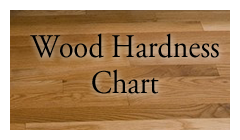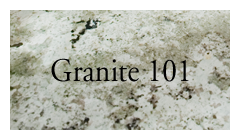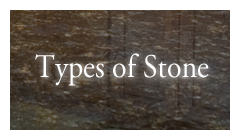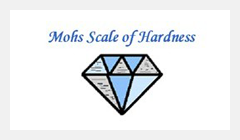Mohs Scale of Relative Mineral Hardness
A German mineralogist by the name of Friedrich Mohs invented a scale of relative mineral hardness that has become known as the Mohs scale. This scale has been a valuable tool in identifying minerals since 1812. The following are the ten standard minerals in the Mohs scale:

- Talc - (Absolute Hardness 1)
- Gypsum – (Absolute Hardness 2)
- Calcite – (Absolute Hardness 9)
- Fluorite – (Absolute Hardness 21)
- Apatite – (Absolute Hardness 48)
- Orthoclase - (Absolute Hardness 72)
- Quartz – (Absolute Hardness 100)
- Topaz – (Absolute Hardness 200)
- Corundum – (Absolute Hardness 400)
- Diamond – (Absolute Hardness 1500)
- Soapstone 1
- Slate 2.5-4
- Marble 3-4
- Limestone 3-4
- Travertine 4-5
- Sandstone 6-7
- Granite 6-7
- Natural Quartz 7
The hardness of material is measured by determining which material can scratch or be scratched by others, if they can scratch one another then they are the same hardness. For example if a given material is scratched by Corundum but not by Diamond, its hardness on the Mohs scale is 9.5. The Mohs scale is truly a comparative scale. In terms of absolute hardness quartz is a 100 and topaz is 200 (twice as hard). The hardness of stone is just one way of identify them, things like color, luster, crystalline form and cleavage are also used.




